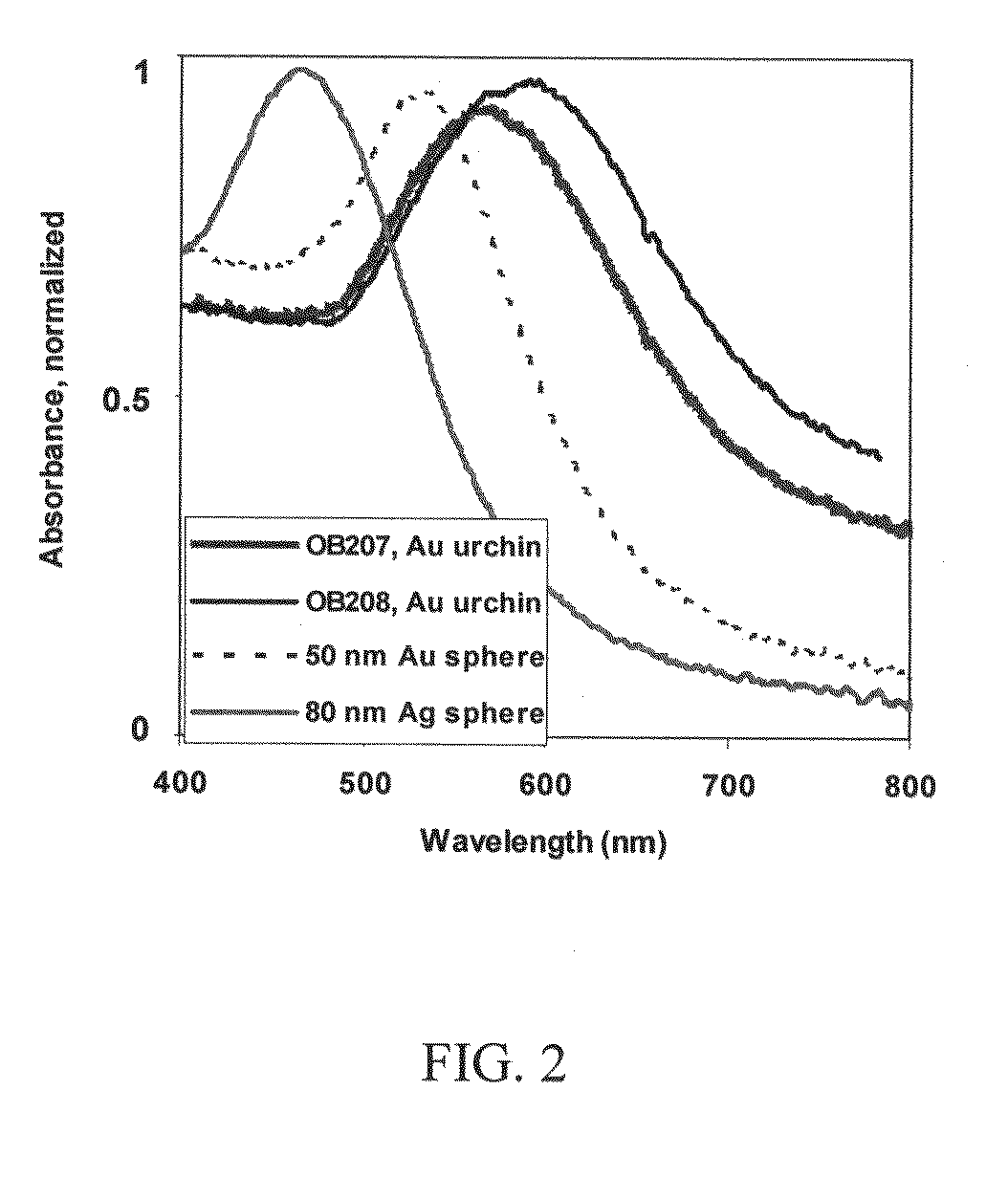Optical limiting using plasmonically enhancing nanoparticles
a technology of optical limiters and nanoparticles, applied in the field of laser irradiation, can solve the problems of reducing the efficiency of optical limiters, and molecule environmental instability, so as to prevent the transmission of incident light, improve the efficiency of optical limiters, and improve the effect of optical limiter performan
- Summary
- Abstract
- Description
- Claims
- Application Information
AI Technical Summary
Benefits of technology
Problems solved by technology
Method used
Image
Examples
experiment 1
Experiment 1: Nanoparticle Sample Preparation
[0039]Aqueous-based nanoparticle solutions were used in experiments described herein, although it will be understood that other nanoparticle preparations may be used. Commercial Ag and Au nanospheres were obtained from BBI Corporation (distributed by Ted Pella) in nominal sizes varying from 20 nm diameter to 80 nm diameter. Solution concentrations were provided by the manufacturer and varied from 1011 to 1010 sols / cm3, depending on particle size. Nanoparticle solutions were diluted using deionized water as needed. Table 1 shows the concentration of all of the nanomaterials used for optical limiting measurements.
TABLE 1Description of nanoparticles used in opticallimiting experiments and their concentrationConcentration usedNanoparticle Description(particles / cm3)80 nm Ag sphere, BBI1 × 10950 nm Au sphere, BBI2.6 × 1010 OB208 Au urchin, specially5 × 109synthesizedOB207 Au urchin, specially5 × 109synthesized
[0040]Au nanourchins were prepared ...
experiment 2
Experiment 2: Optical Limiting Measurement
[0044]For the optical limiting characterization, we have chosen the Z-scan method described in M. Sheik-Bahae, A. A. Said, and E. W. Van Stryland, “High-sensitivity, single-beam n2 measurements,” Opt. Lett. 14, 955-957 (1989). In this technique, a thin sample is placed in a focused beam, where the intensity varies along the optical axis (Z-axis), and the transmission is recorded as a function of Z-position. Changes in transmission are then analyzed in terms of the sample's intensity-dependent optical properties, including the real and imaginary parts of the nonlinear index, the latter being related to two-photon absorption (see also further discussion below).
[0045]FIG. 3 is an experimental schematic of a Z-scan optical limiting setup used in experiments conducted in accordance with an embodiment of the invention. The laser source is a Continuum EX Plus OPO system which produces tunable radiation from near-IR down to 215 nm. For the purpose o...
PUM
 Login to View More
Login to View More Abstract
Description
Claims
Application Information
 Login to View More
Login to View More - R&D
- Intellectual Property
- Life Sciences
- Materials
- Tech Scout
- Unparalleled Data Quality
- Higher Quality Content
- 60% Fewer Hallucinations
Browse by: Latest US Patents, China's latest patents, Technical Efficacy Thesaurus, Application Domain, Technology Topic, Popular Technical Reports.
© 2025 PatSnap. All rights reserved.Legal|Privacy policy|Modern Slavery Act Transparency Statement|Sitemap|About US| Contact US: help@patsnap.com



